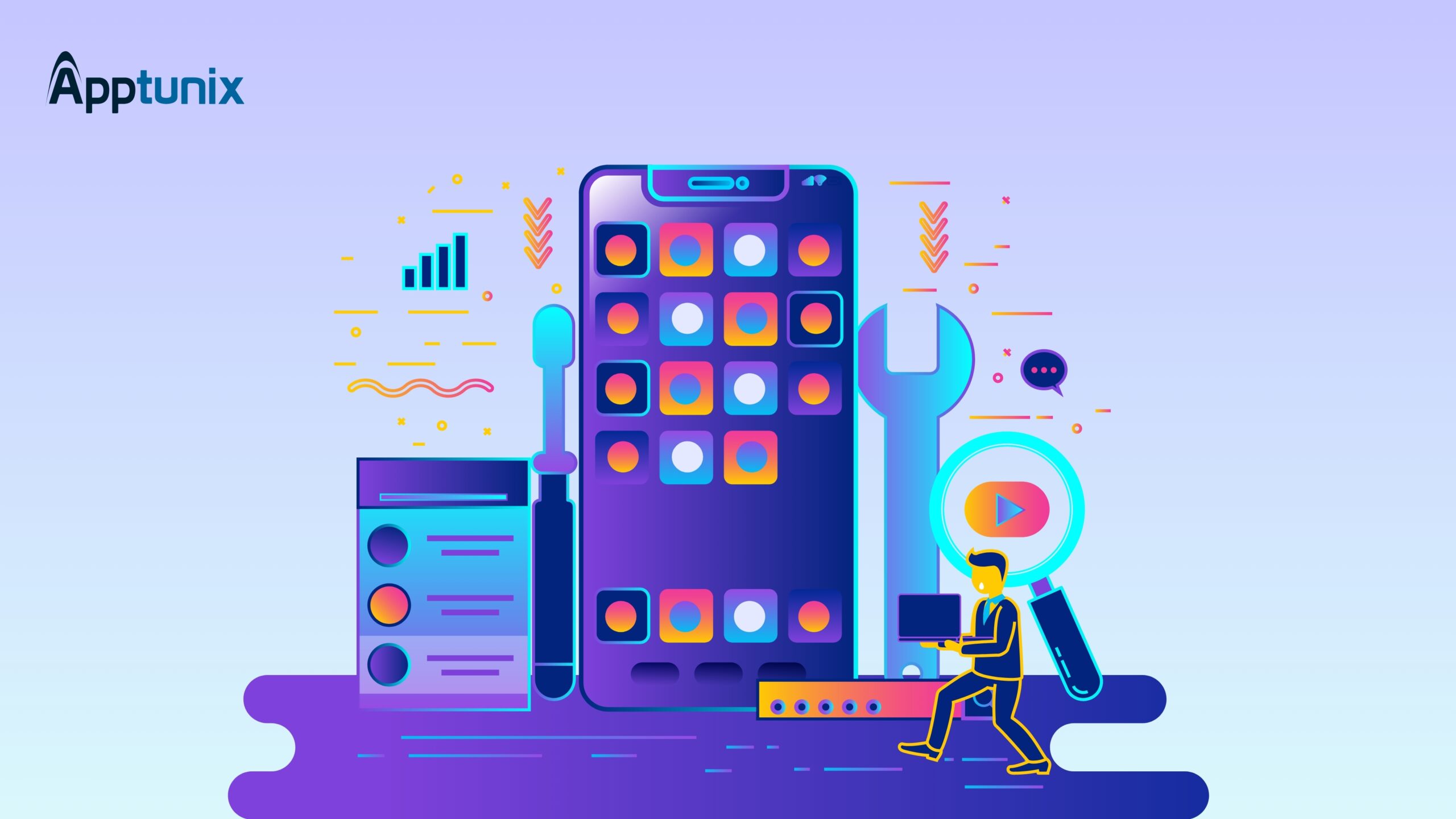Don't miss the chance to work with top 1% of developers.
Sign Up Now and Get FREE CTO-level Consultation.
Confused about your business model?
Request a FREE Business Plan.
What is the Impact of IoT on Healthcare?
Table of contents

In today’s digital era, the Internet of Things (IoT) has become a trailblazer in various industries, and healthcare is no exception. The impact of IoT in healthcare is rapidly gaining momentum, revolutionizing patient care. From advanced machine control to virtual medical assistance, IoT applications are transforming the global healthcare landscape.
IoT implementation in healthcare can lead to substantial cost savings and streamlined operations. The Precedence Research Report shows that the global market size of IoT in healthcare is expected to grow from $180.5 billion in 2021 to $960.2 billion in 2030. This growth is being driven by the increasing demand for remote patient monitoring, the growing adoption of wearable devices, and the rising need for real-time data analytics.

As the market for IoT in healthcare continues to reach the summit, there’s no better time than now to adopt this transformative technology. By integrating IoT into healthcare app development services, providers can offer simplified and efficient care to patients, leading to better health outcomes.
In this blog, we’ll talk about the exciting ways IoT is reshaping healthcare, exploring its benefits, use cases, and challenges and highlighting its immense potential to enhance patient outcomes and revolutionize the industry. Let’s plunge on this enlightening journey together.
How Does IoT Fit in Healthcare?
You know, sometimes we don’t even realize when we’re not feeling well. It’s crucial to see a doctor to catch any symptoms early on. But here’s the thing – with regular monitoring of vital signs like blood pressure, diabetes, and heart rate, we can actually get alerts about potential health risks. It’s like having your health at your fingertips!
The problem is, many people face delays in getting medical care. It could be due to overcrowded hospitals, traffic, or just not enough doctors available. That’s where the Internet of Medical Things (IoMT) comes in. With this network of interconnected devices, we can gather real-time data and tackle medical issues more effectively.
Medical Things (IoMT) in healthcare have a profound impact on patients, physicians, and hospitals. Let’s explore each individually:
1. IoT in Healthcare for Physicians:
- Remote Patient Monitoring: Physicians can access real-time patient data from IoT-enabled devices, allowing them to monitor patients’ vital signs and health conditions outside of traditional healthcare settings.
- Data-Driven Diagnostics: IoT-generated data, combined with advanced analytics and AI, help physicians in diagnosing medical conditions accurately.
- Telemedicine and Virtual Consultations: IoT facilitates virtual consultations, allowing physicians to connect with patients remotely.
2. IoT in Healthcare for Hospitals:
- Asset Tracking and Management: IoT-powered asset tracking systems help hospitals efficiently manage medical equipment and supplies.
- Enhanced Patient Monitoring: IoT devices like smart beds and patient monitoring systems provide continuous data on patients’ health status.
- Environmental Monitoring and Infection Control: IoT sensors monitor hospital environments, ensuring optimal conditions and detecting potential infection risks.
3. IoT in Healthcare for Patients:
- Personal Health Tracking: IoT wearables and health apps empower patients to track their own health metrics, such as heart rate, activity levels, and sleep patterns.
- Remote Consultations and Access to Specialists: IoT enables telemedicine and virtual consultations, granting patients access to healthcare services from the comfort of their homes.
- Medication Management: IoT devices, such as smart pill dispensers, help patients manage their medications effectively.
- Chronic Disease Management: For patients with chronic conditions, IoT devices play a critical role in monitoring their health proactively.
Overall, IoT empowers all stakeholders involved, leading to more efficient, patient-centric care and improved health outcomes. However, ensuring data security, privacy, and ethical considerations remain essential to foster trust and responsible use of IoT technologies in the healthcare ecosystem.

What are the IoT Strategies that can be Deployed in Healthcare?
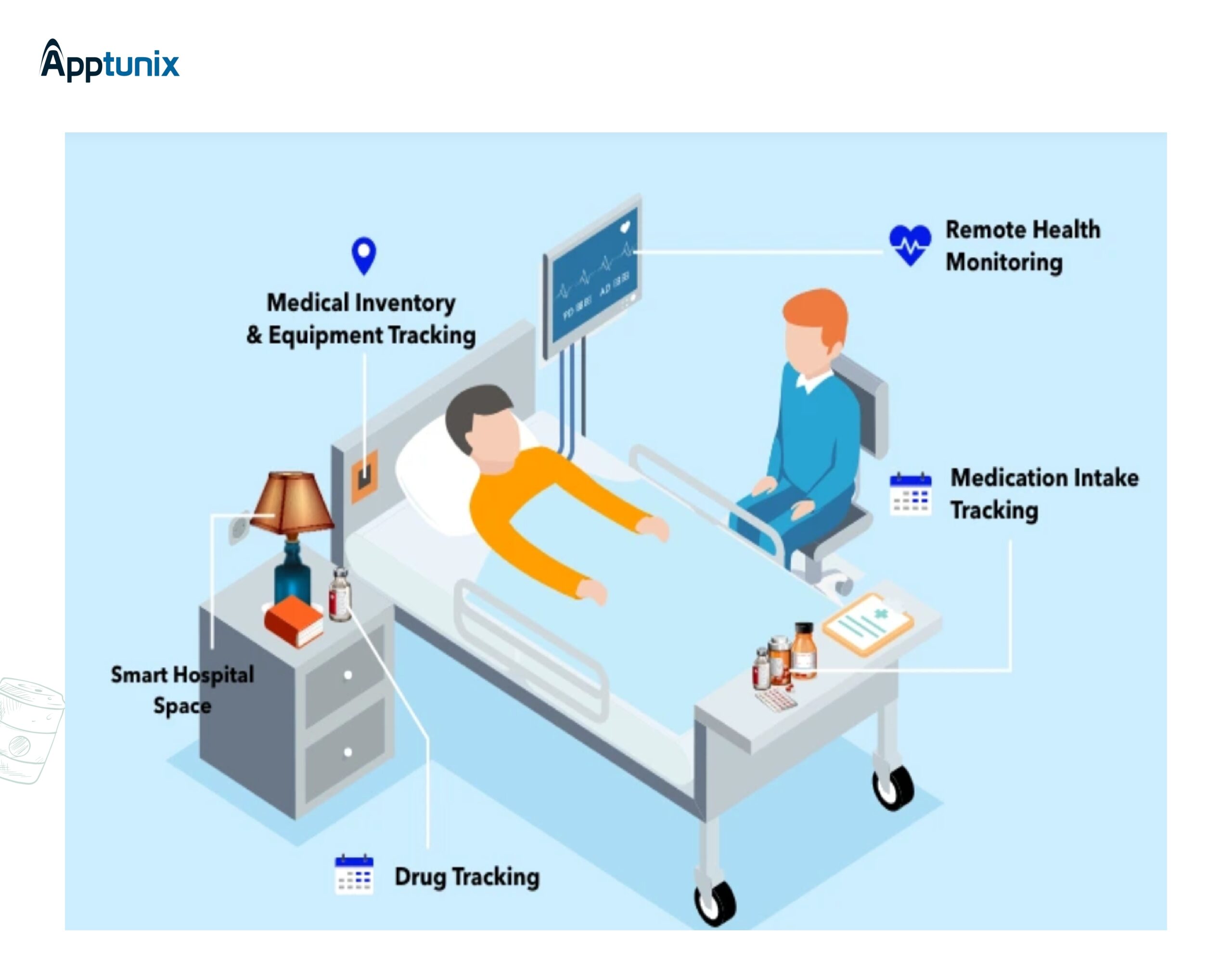
IoT strategies in healthcare involve establishing connected devices and applications to improve patient care, optimize hospital operations, and facilitate data-driven decision-making. These strategies empower healthcare providers to improve patient outcomes and promote preventive health management.
Connecting Medical Devices and Sensors to Diagnostic Data Service
Integrating medical devices and sensors with diagnostic data services enables real-time data transmission, facilitating quick and accurate diagnostics for healthcare professionals. The data-driven insights obtained from connected devices enhance diagnostics, treatment decisions, and overall patient care, ultimately leading to optimized healthcare services.
Connecting Sensors and Actuators in Medical Devices to System Outcomes
Establishing seamless connections between sensors and actuators allows efficient device control and performance enhancement. This interconnected system minimizes manual interventions and ensures that medical devices contribute effectively to positive patient outcomes.
Enhance Data Quality and Security
By implementing robust security measures, such as encryption and access controls, healthcare organizations can safeguard sensitive patient data from unauthorized access and cyber threats, ensuring the integrity and confidentiality of healthcare data.
Now that you have understood IoT’s impact on healthcare, we will explore the numerous benefits of IoT, paving the way for a smarter and more efficient healthcare landscape.
What are the benefits of implementing IoT in healthcare?
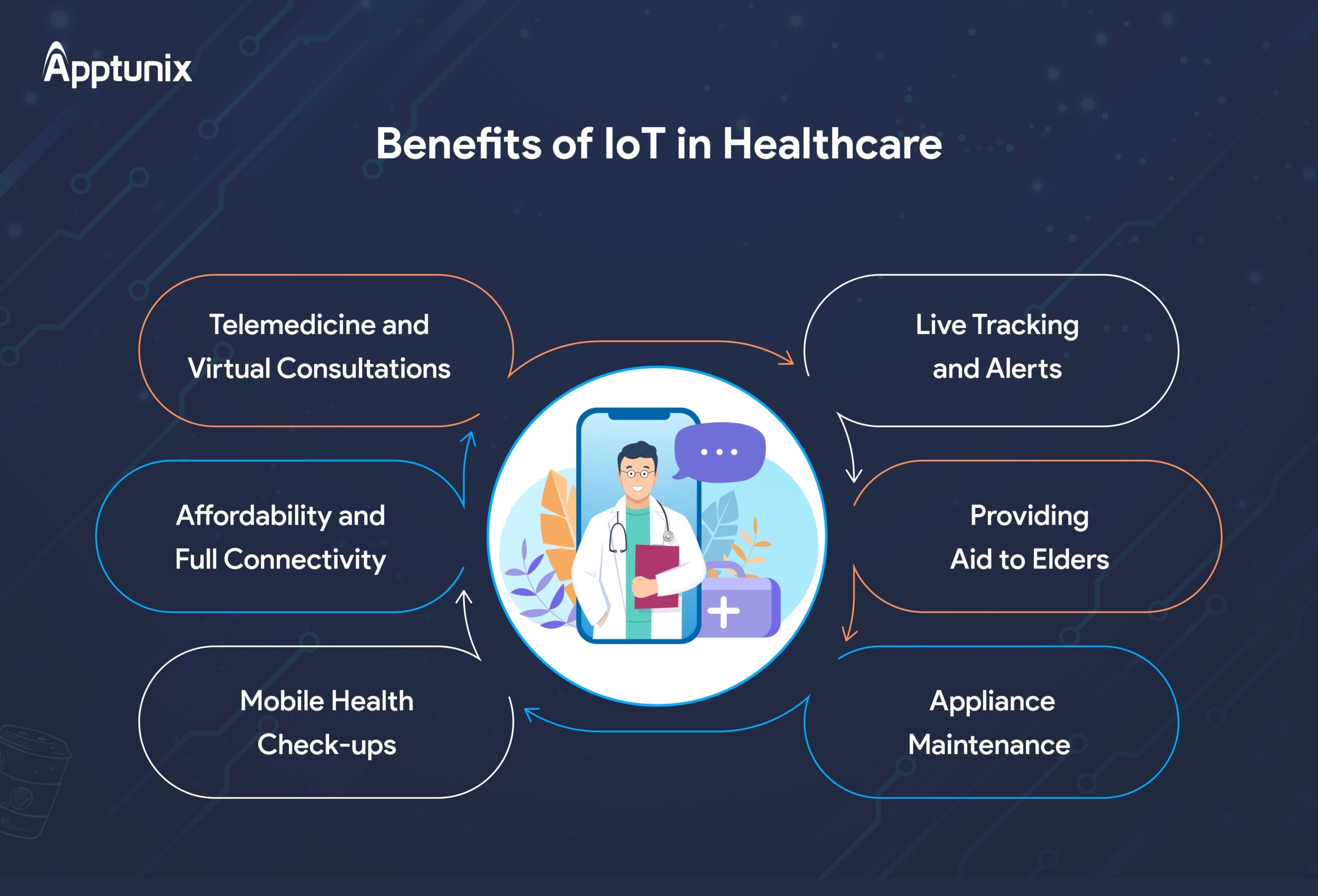
Implementing IoT in healthcare brings a plethora of benefits that transfigure patient care and modernize healthcare processes. Let’s discuss some of the benefits that IoT offers for endless possibilities to transform the healthcare industry.
- Introduces Telemedicine and Virtual Consultations
Telemedicine and Virtual consultations are innovative healthcare practices facilitated by IoT technology. Through telemedicine, patients can remotely access medical services and consult with healthcare professionals using video conferencing and communication platforms. This approach increases healthcare accessibility, especially in rural or underserved areas, reduces travel time and costs for patients, and enables continuous care and monitoring from the comfort of their homes.
- Ensuring Affordability and End-to-End Connectivity
In the healthcare sector, implementing IoT focuses on ensuring affordability for patients and healthcare providers while maintaining seamless end-to-end connectivity. By developing cost-effective IoT solutions and leveraging connected devices, healthcare organizations can improve patient care, optimize operations, and enhance data exchange across the entire healthcare ecosystem, ultimately leading to more efficient and accessible healthcare services.
For instance, an IoT-powered remote patient monitoring system allows patients with chronic conditions to use affordable wearable devices that collect health data. This data is seamlessly transmitted to healthcare providers, ensuring continuous monitoring and timely interventions, all while maintaining a cost-effective solution that enhances end-to-end connectivity in healthcare delivery.
- Mobile Health Check-ups
A portable healthcare system leverages IoT-enabled devices and mobile technology to offer convenient and on-the-go health assessments. Patients can use their smartphones or wearable devices to monitor vital signs, track health metrics, and receive personalized health insights.
For example, a patient with diabetes uses a mobile health app to monitor his blood glucose levels and medication adherence. The app sends real-time data to his doctor, enabling remote monitoring and timely interventions. This approach fosters proactive health management and empowers individuals to take charge of their well-being, leading to better overall health outcomes.
- Live Tracking and Timely Alerts
Live tracking and timely alerts in healthcare anchorage IoT technology to monitor patients’ health conditions in real time. IoT devices continuously collect and transmit data to healthcare providers, allowing for immediate response to any changes or emergencies. This proactive approach enables timely interventions, enhancing patient safety, and improving overall healthcare outcomes.
Consider this, a cyclist, wears a smart helmet equipped with IoT sensors. The helmet tracks his speed, location, and impact force during rides. In the event of a severe impact, the helmet automatically sends a distress signal to emergency services and emergency contacts, ensuring quick response and assistance.
- Providing Aid to Elders
IoT provides valuable aid to elders by introducing connected devices that enhance their safety and well-being. IoT-enabled fall detection systems automatically alert caregivers or emergency services if an elderly person experiences a fall. Smart home devices can assist with tasks, such as medication reminders and home automation, supporting independent living for seniors and giving their families peace of mind.
For example, Susan, an elderly woman living alone, uses an IoT-based fall detection pendant. When she accidentally falls, the pendant automatically sends an alert to her family members and a nearby medical response team. This quick response ensures Susan receives immediate assistance, promoting her safety and independence at home.
What are some examples of IoT applications?
Healthcare IoT devices showcase remarkable technical innovation, offering numerous benefits. They prove invaluable in reducing waiting times in emergency rooms and tracking patients, staff, and inventory efficiently. IoT ensures disciplined drug management and continuous availability of critical hardware, enhancing overall healthcare delivery and patient outcomes. Its application in healthcare exemplifies the potential of technology in transforming the industry.

-
Healthcare Wearables for Chronic Disease Management
Healthcare wearables, such as smartwatches and fitness trackers, are essential tools for chronic disease management. These devices continuously monitor vital signs, activity levels, and other health metrics, enabling patients and healthcare providers to track progress, detect anomalies, and make informed decisions for more effective and personalized treatment plans.
For example, Fitbit is a popular health and fitness app that works with wearable devices to track users’ physical activity, heart rate, sleep patterns, and more. It encourages users to set fitness goals and offers personalized insights to help them stay active and lead a healthier lifestyles.
-
Environmental Monitoring in Hospitals
Environmental monitoring in hospitals involves using IoT sensors to track factors like temperature, humidity, air quality, and more. These sensors ensure optimal conditions for patient comfort, aid infection control efforts, and create a safe and healthy environment for both patients and healthcare staff.
AirVisual is a perfect exemplary app that monitors air quality and pollution levels in hospitals and surrounding areas. It provides real-time data on pollutants like PM2.5, PM10, nitrogen dioxide, ozone, and more, helping healthcare facilities maintain a healthy and safe environment for patients and staff.
-
Smart Beds
Can you imagine Smart beds equipped with IoT sensors are used in healthcare settings for patient monitoring? These beds can track patients’ movements, vital signs, and sleep patterns, providing real-time data to healthcare staff. This continuous monitoring enhances patient safety and enables timely interventions, contributing to improved healthcare outcomes and better patient care.
One example of an app that utilizes smart beds and patient monitoring is the “Hill-Rom Voalte Smart Bed” app. This app works in conjunction with smart hospital beds equipped with IoT sensors. It allows healthcare providers to monitor patients’ movement, positioning, and vital signs in real time, providing them with valuable insights to deliver personalized care and ensure patient comfort and safety during their hospital stay.
-
Smart Pill Dispensers
These nifty devices are like your personal medication assistant! They help you stay on top of your medication schedule by reminding you when it’s time to take your pills. Some even dispense the right dose at the right time, making it super convenient.
The Hero Pill Dispenser device is designed to help individuals, especially seniors, manage their medications effectively. The Hero Pill Dispenser is equipped with compartments for each dose, and it dispenses the correct pills at the scheduled times. It also sends reminders and notifications to the user’s smartphone or caregiver’s device to ensure timely medication intake.
-
Healthcare Charting
Traditional healthcare charting relies on manual data entry, which can be time-consuming and prone to errors. It also limits real-time access to patient information, hindering timely interventions and collaborative care.
IoT-enabled healthcare charting leverages connected devices to automate data collection and transmission. Wearable health trackers, vital sign monitors, and smart medical equipment capture patient data in real time. This data is securely transmitted to electronic health records (EHR) systems, allowing healthcare providers to access up-to-date patient information instantly.
An app that incorporates IoT for healthcare charting is MyChart. This app integrates with IoT devices, such as wearable health trackers and smart medical equipment, to collect and update patient data in real time. It seamlessly syncs with the Epic EHR system, providing healthcare providers with instant access to the latest patient information for more accurate and efficient charting and care delivery.
-
Smart thermometer
Traditional thermometers require manual temperature readings, which can be inconvenient and challenging for parents or caregivers, especially when monitoring a sick child or elderly patient.
Smart thermometers, equipped with IoT technology, provide an innovative solution. These devices automatically record and transmit temperature data to a smartphone or tablet via a mobile app.
The “Kinsa Smart Thermometer” is a great example. This IoT-enabled device connects to a smartphone via a mobile app. It automatically records temperature readings and allows users to track temperature trends over time. The app also provides personalized guidance and health insights, making it a valuable tool for parents and caregivers in managing fevers and illnesses effectively.

Important Challenges to Overcome for Successful IoT Integration
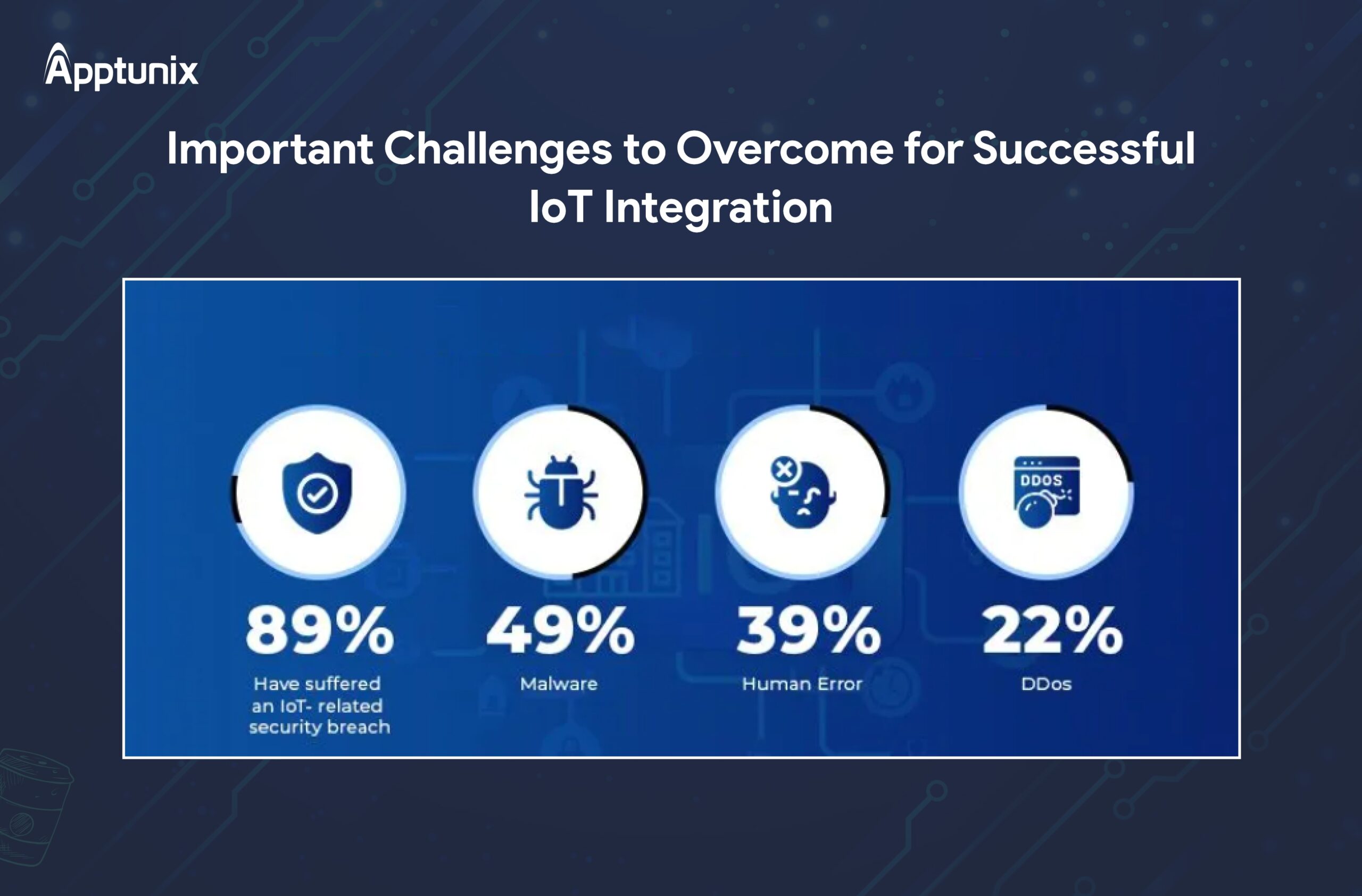
Implementing an IoT-based healthcare system comes with its share of challenges. Numerous pitfalls contribute to the challenges faced in establishing an efficient and reliable IoT healthcare ecosystem. Now, let’s take a closer look at each of them individually.
Data Security and Privacy
IoT devices collect sensitive patient data, making data security and privacy a top concern. Inadequate security measures can lead to data breaches, exposing patients’ sensitive medical information to unauthorized individuals or hackers. Such breaches can result in identity theft, medical fraud, or other forms of exploitation.
Ensuring robust encryption, authentication, and secure data transmission is essential to safeguard patient information from unauthorized access or cyberattacks.
Device Failure
Device failure in IoT implementations, especially in healthcare, can result in serious consequences such as inaccurate data, interrupted patient monitoring, and compromised treatment decisions. This can jeopardize patient safety and lead to suboptimal healthcare outcomes.
To address device failure issues, healthcare organizations should invest in high-quality, reliable IoT devices from reputable manufacturers. Implementing regular maintenance schedules and real-time monitoring of device health can help identify potential issues early on. Developing robust contingency plans and redundant systems can also provide backup solutions to ensure continuous care in case of device failure.
Cross-Platform Capability
The lack of cross-platform capability in IoT solutions creates a fragmented user experience. Users may face limitations when accessing IoT devices and data on their preferred devices due to compatibility issues. This can lead to user frustration, reduced adoption rates, and hinder the seamless integration of IoT into daily life.
To address this challenge, IoT solution providers should prioritize cross-platform compatibility during the development phase. Using technologies like HTML5, React Native, or Flutter allows Building Mobile Applications that can run on multiple platforms. Adopting standardized communication protocols, like MQTT or CoAP, ensures IoT devices can interact seamlessly across various operating systems, enhancing user accessibility and promoting broader IoT adoption.
Network Connectivity
Network connectivity is a critical challenge in IoT implementations, especially in healthcare. Unreliable or intermittent network connections can disrupt data transmission between IoT devices and healthcare systems, leading to delayed or inaccurate information. This can hinder real-time patient monitoring and timely interventions, impacting patient safety and care quality.
Healthcare organizations should invest in robust and secure network infrastructure. Redundancy and failover mechanisms can provide backup connectivity options to ensure continuous data transmission. Utilizing edge computing can also reduce reliance on cloud connectivity, processing data closer to the source and minimizing data transmission requirements.
[Bonus Read: How to Build a Healthcare Consultation App Like Zocdoc in 2023]
The Future of Healthcare: Embracing IoT’s Impact
As IoT continues to revolutionize various industries, its potential impact on healthcare is profound and the future of healthcare is teeming with exciting possibilities. Healthcare startups are at the forefront, developing innovative applications to transform the medical landscape. With IoT’s integration, healthcare is poised to become more affordable, effective, and patient-centric.
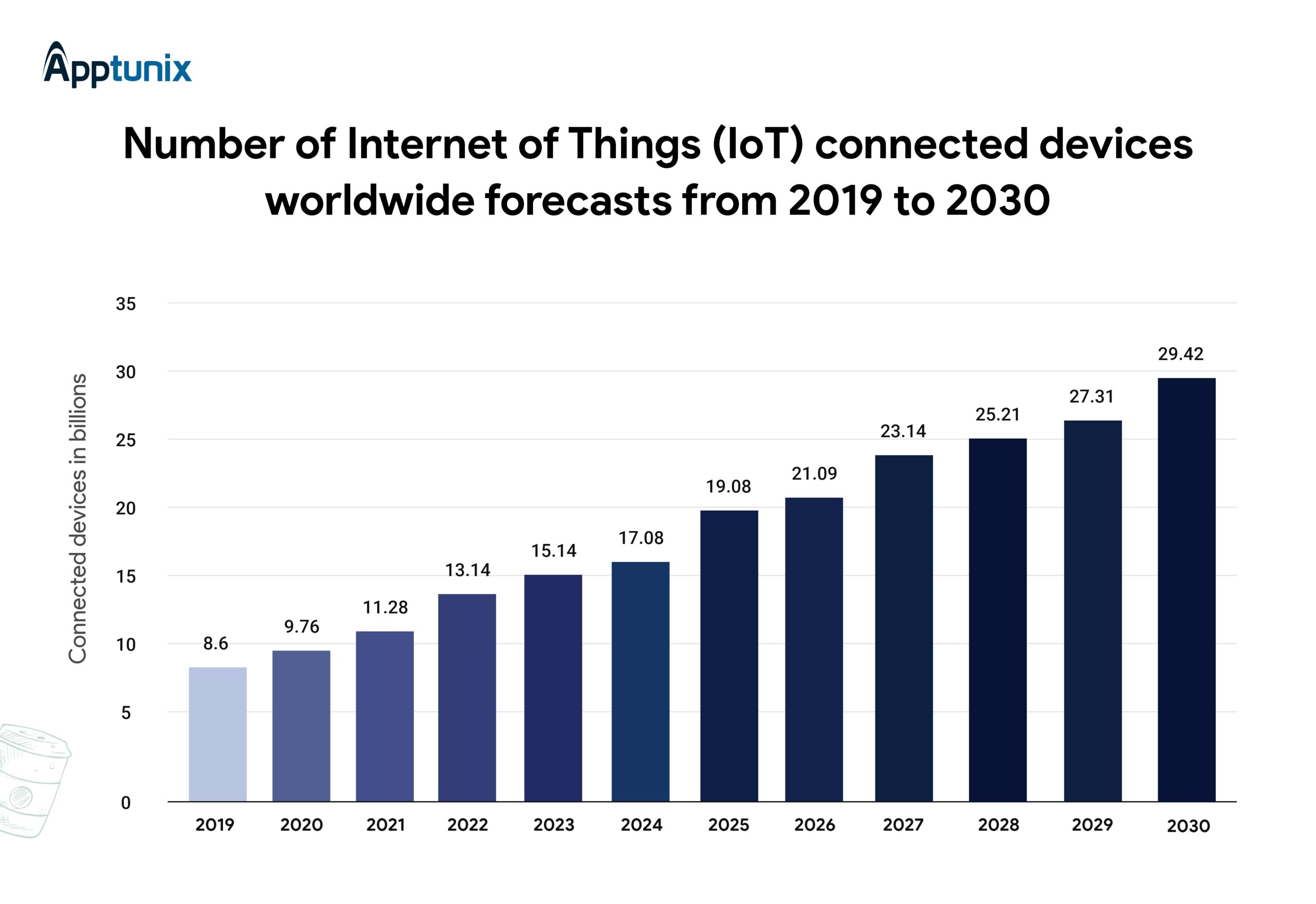
The graph shows that the number of IoT-connected devices is expected to grow from 11.28 billion in 2021 to 29.42 billion in 2030. The number of IoT-connected devices in China is expected to be the highest in 2030, followed by the United States and India.
The growth of the IoT-connected devices market is being driven by several factors, including
- The increasing demand for remote patient monitoring
- The growing adoption of wearable devices
- The rising need for real-time data analytics
- The increasing connectivity of devices and machines
- The falling cost of IoT devices
Now that you understand that IoT is undoubtedly becoming an integral part of the healthcare system. The future of IoT in healthcare is bright, and those who seize this opportunity will undoubtedly make a significant impact on the medical community and patient well-being. Let’s see how Apptunix can help you build your dream with a promising future.
How can Apptunix Contribute to the Success of Your Business?
The integration of IoT technology in the medical industry is already making significant strides, and its impact is only set to grow in the future. With IoT’s potential to enhance patient care, reduce costs, and improve treatment outcomes, healthcare is embracing this transformative technology.
Major players like Google and Apple are leading the charge, investing in IoT healthcare solutions to empower patients and healthcare providers alike. For investors and healthcare professionals, it’s the best time to paddle the boat and be the change you want to see in the world of healthcare.
A professional app development company like Apptunix can significantly contribute to the success of your business by providing a wide range of valuable services and expertise. Our expertise in providing market insights, prioritizing user-centric design, and offering cross-platform healthcare application development and ongoing support can help your app stand out in a competitive market, attract more users, and ultimately contribute to the growth and success of your business.

Final Words
The combination of IoT and healthcare is poised to redefine patient care and its potential to revolutionize efficiency and healthcare delivery is incredibly promising.
For healthcare providers, investing in IoT technology can lead to cost savings, streamlined operations, and more personalized care for patients.
For startups and entrepreneurs, the healthcare IoT market offers a wealth of opportunities for innovation and growth. Developing novel applications and solutions in this space can address critical healthcare challenges and significantly impact the industry’s future.
With Apptunix, now is in truth the best time to back this technology and utilize its full flair. By embracing IoT-driven advancements, healthcare organizations and entrepreneurs can stay at the forefront of medical innovations and create a more connected, efficient, and patient-centric healthcare ecosystem.
Frequently Asked Questions(FAQs)
Q 1.How can IoT technology improve patient outcomes and care delivery?
IoT in healthcare can revolutionize patient care by providing real-time monitoring, data-driven insights, and personalized treatment plans. With IoT-enabled devices and data analytics, healthcare professionals can offer proactive interventions, early disease detection, and better chronic disease management, ultimately leading to improved patient outcomes and satisfaction.
Q 2.What are the potential challenges and risks associated with integrating IoT in the healthcare domain?
While IoT offers transformative opportunities, there are challenges to consider, such as data security and privacy concerns, interoperability issues, and regulatory compliance. As a healthcare professional investor/startup, it is essential to partner with experienced IoT solution providers and ensure strict adherence to industry standards to mitigate these risks effectively.
Q 3.How can IoT-driven innovations in healthcare provide a competitive advantage for our investment/startup?
Embracing IoT technology can offer a competitive edge by creating innovative healthcare solutions that improve patient engagement, optimize workflows, and reduce operational costs. By investing in cutting-edge IoT applications like remote patient monitoring, telemedicine platforms, and AI-driven healthcare analytics, our investment/startup can position itself as a leader in the rapidly evolving healthcare market.
Rate this article!
(3 ratings, average: 4.67 out of 5)
Join 60,000+ Subscribers
Get the weekly updates on the newest brand stories, business models and technology right in your inbox.

Introducing Sameer, a seasoned writer with 6 years of experience in the field of technical content creation. Sameer’s in-depth technical knowledge encompasses a wide range of subjects, from software development and IT solutions to hardware technologies. His expertise extends to content writing within the realm of Amazon seller brands, where he excels in creating detailed and optimized technical content for various platforms. Sameer is a talented professional currently contributing his expertise at Apptunix, where he excels in crafting exceptional B2B content. With a strong foundation in content writing, Sameer’s skills are finely honed to cater to the needs of businesses in the tech industry.

Telemedicine 2.0 - A Comprehensive Guide On What Healthcare Providers Need To Know?
Discover how the latest advancements like Artificial Intelligence in telemedicine are reshaping patient care. This comprehensive resource offers insights into the key trends and innovations driving this shift, providing valuable knowledge for healthcare professionals looking to stay ahead.
Download Now!Don't Know Much
About Technology?
Let our experts help you decide the right tech stack for your idea.
